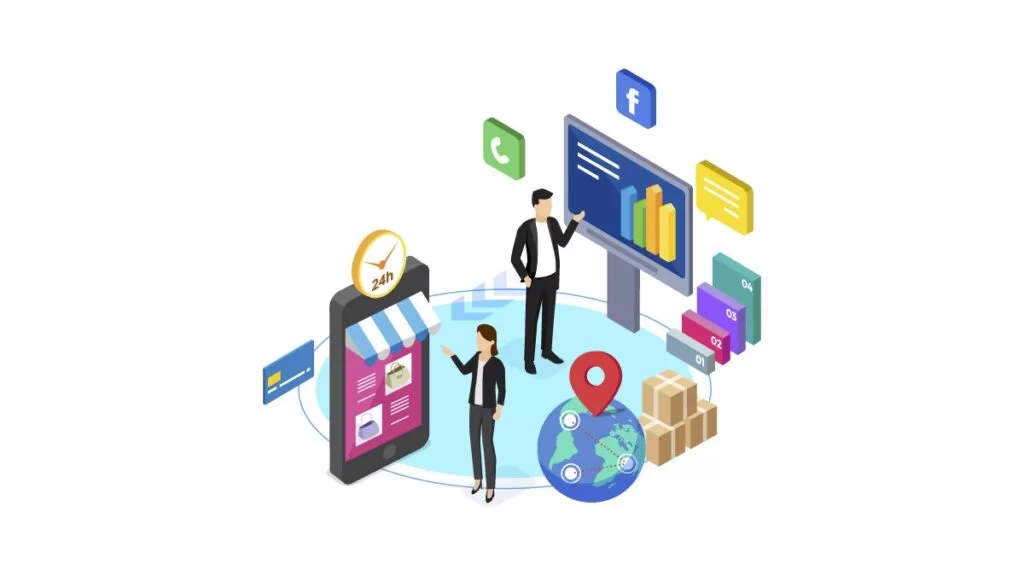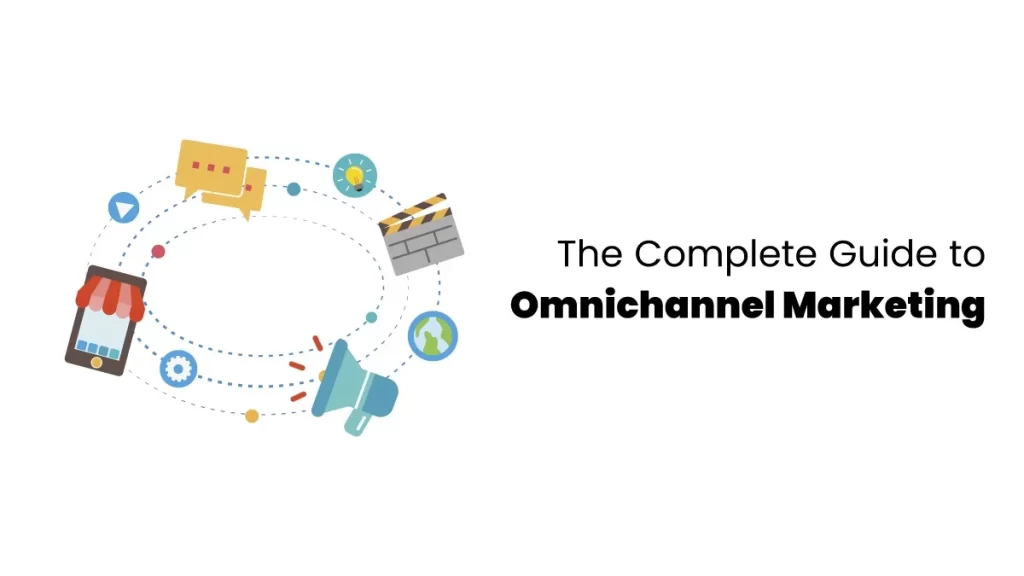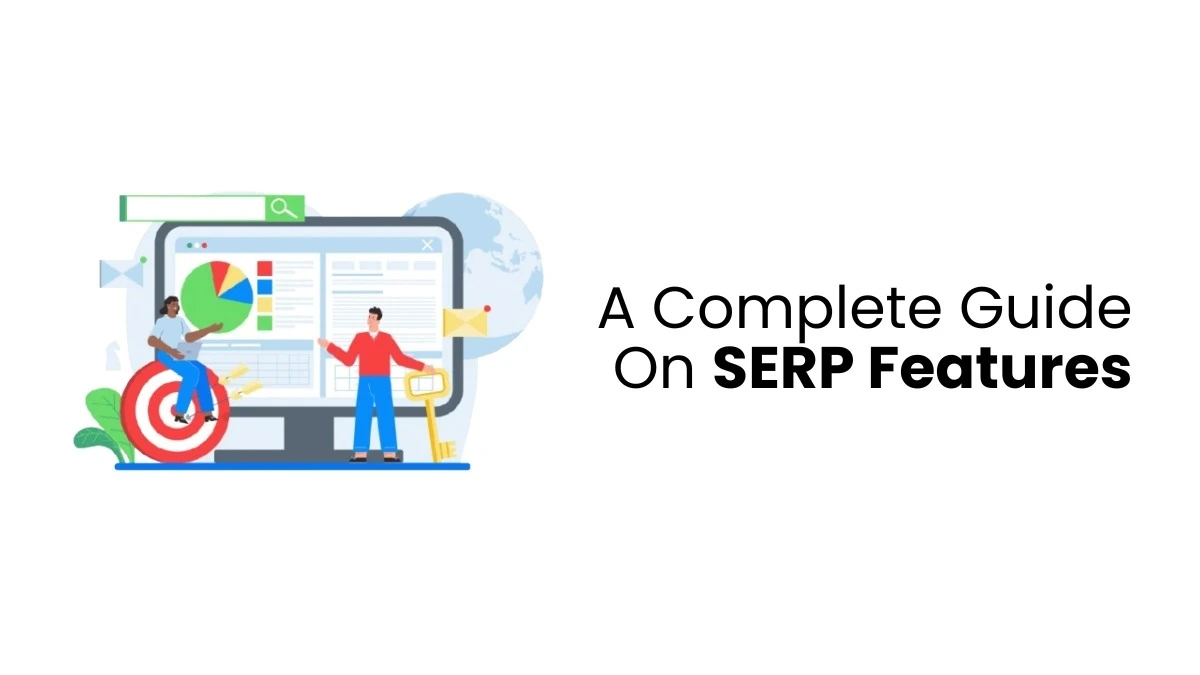Imagine that you have searched for a skincare product on YouTube and watched a short review video about it. You saw the same skin product’s ad on Instagram, noticed a free consultation was available, and enquired about it. When you visit their website, your interest in that product is already recognised, and your chat assistant will continue the conversation from where you left off. That’s Omnichannel Marketing. Simply Personalized, Consistent, and Connected!
Learn to integrate multiple channels simultaneously to easily achieve your marketing goals. This will increase customer loyalty, boost brand awareness, and creatively drive sales. Let’s explore more about omnichannel marketing and its applications.
What is Omnichannel Marketing?
Omnichannel marketing is the integration of all channels to deliver a unified customer experience regardless of the channel they used to interact with the brand. These channels include social media (WhatsApp, Facebook, Instagram, and Telegram), email, mobile apps, physical stores, and many more. This means that the customer does not have to start over when switching platforms. Wherever they go, whichever media they use, it does not matter. The customer will have a personalized experience, and the brand will note their past preferences, making communication easier between the two parties.
Why Omnichannel Marketing Strategies Matter?
Now you have understood what is omnichannel marketing. It is a fact that omnichannel Marketing is a prerequisite for many brands. Today’s Customers are very advanced ones. In the past, customers had only one way to learn about that brand. But now the situation has changed. Even if a customer wanted to purchase a product, they would research it on their mobile phone, check its reviews on social media, compare prices on desktops, and sometimes check prices in stores. If the customer is dissatisfied with this product on any platform, they will never purchase it. To build customer trust, every channel should provide a seamless experience. That is where omnichannel marketing strategies become relevant in this era.
Omnichannel Marketing vs Multichannel Marketing vs Cross-Channel Marketing
These are different approaches to engaging customers across various channels. They are shown below:
Omnichannel Marketing
As we discussed earlier, customers enjoy a connected experience across every channel. This is a unified approach to bring every customer touchpoint into a single database. Consider yourself a customer planning to buy a product. You have added that product to your cart on your mobile. Then you left from there and completed this transaction with your desktop later. Even though the platform looks different, your experience must be the same. This is the logic of omnichannel marketing.
Multichannel Marketing
In this marketing, the brand will reach customers in their preferred channels, such as WhatsApp or email. As you know, there are several channels available now, each channel has its own contact points and user experience. A big, established company has one team for the website, another for email, and another for social media, and so on. Each team will not be aware of the other team’s clients. So, maintaining each channel independently is a process of multichannel marketing.
Cross-Channel Marketing
This is a type of marketing that uses different channels to enhance the customer experience. Just imagine a relay race. Imagine a customer contacts one platform and then switches to another, just as a runner hands a baton to another runner in a relay race. So every player in a relay race contributes to the team’s overall success. Similarly, every platform leads to a smooth customer experience. With every platform’s intervention, customers’ needs will be fulfilled, and that is cross-channel marketing.
How To Create an Omnichannel Marketing Strategy?
You have a clear idea of what is omnichannel marketing. There are several building blocks needed to create an omnichannel marketing strategy. Let’s explore them.
Identify Possible Key Channels & Customer Touchpoints
Customers can contact you through 3 key channels: digital, non-digital, and hybrid. In digital Channels, we use live chat, sms, several apps, websites, social media, email, etc. In non-digital channels, there will be broadcast media, phone calls, and print media. In a hybrid channel, we use features like buy online, pickup in store, and others.
Evaluate Overall Customer Experience
Ensure the customer experiences a consistent interaction across all channels. Customer is King, so ensure that every customer is well treated in every channel. Regularly check whether improvement is needed in any areas.
- It is ideal to perform market research to collect real-time insights across customer segments in different locations.
- Never forget to conduct omnichannel surveys, such as feedback sessions.
- Use customer reviews across different channels and bring them together to get a clear customer experience.
- To improve engagement and customer satisfaction, use AI tools and behavioural insights.
- Record customers’ opinions about the brand and give them to the public.
- Improve issues in channels like broken links, poor mobile optimization, etc.
Use a Consistent Marketing Strategy
It is time to check whether your brand messaging works are consistent in nature. When customers try to interact with you on different platforms, they will always expect an adequate response. If they experience a seamless interaction, they will trust your brand. So make these messaging services consistent without any flaws.
Make a Personalized Experience in Omnichannel Marketing
If you are providing a personalized experience in omnichannel marketing, it would be more beneficial. It is a fact that almost 50% of customers love a personalized experience. So it is not just recommended for omnichannel marketing; it is a must-have in the marketing strategy.

Steps to Create an Omnichannel Roadmap
Assess and Plan: First, you have to review all your current channels, understand how they connect, and identify which areas need improvement.
Know Your Customers: Create clear customer profiles, track their journeys, and plan how to reach them on different platforms.
Integrate and Create: Use connected tools (such as CRM and social media platforms), build a single customer database, and share consistent content across channels.
Launch and Improve: Start step by step, track performance, train your team, and keep refining your strategy based on results and customer feedback.
Benefits of Omnichannel Marketing
There are several benefits of this marketing. They are listed below:
- Enhanced Customer Experience: Ensure customer satisfaction through effective communication in the channels. Customers should not have to explain themselves repeatedly.
- High Revenue: Omnichannel Customers are seen to be more connected to the brand, and they always spend more.
- Smarter Insights: Centralized data is more beneficial for analyzing the customer’s past buying trends and customer behaviour.
- Greater Efficiency: Your brand’s team can work efficiently if they have all the data related to their customer with them. Teams will start to work smartly and deliver a personalized experience to the customers.
- Stronger Market Edge: If your brand is using a unified omnichannel approach than your competitors, there is a more satisfied customer experience, and you can also beat competitors in the race.
Challenges of Omnichannel Marketing
You have a clear idea about the benefits of omnichannel marketing. Now, let’s explore various challenges in Omnichannel marketing. They are:
- Presence of Communication Gaps: If there is no clear communication between the customer and several channels, then it would affect the customer experience.
- Inaccurate Data: If brands are getting incomplete data, how could they communicate with their customers? Inaccurate data is another challenge of omnichannel marketing.
- Team Execution Delays: If your team does not efficiently share the data among others, then it will become a task to manage customers.
- Inconsistent Messaging: If there is no consistent messaging among several channels, then customers will leave you to choose your competitor brand.
- Weak KPI Tracking: If you are not tracking the correct KPIs, then you can’t improve your customer experience.
Key Performance Metrics To Measure the ROI of Your Omnichannel Marketing Strategy
Omnichannel Marketing success can be determined by certain key performance Metrics. Tracking these metrics helps you understand campaign effectiveness, optimize touchpoints, and ultimately boost ROI. Let’s explore each metric one by one:
- Click-Through Rate (CTR): It shows how many people clicked your messages, and also which channels got more engagement.
- Conversion Rate: Measures how many visitors complete desired actions.
- Customer Retention Rate: Indicates how well your brand maintains customer relationships and shows which channel encourages repeat engagement.
- Churn Rate: Tracks how many customers stop engaging with your brand,
- Customer Lifetime Value (CLV): Reflects the total revenue a customer generates over time.
- ROI (Return on Investment): Compares the overall return from your omnichannel campaigns against total costs.
Conclusion
Omnichannel Marketing is not just a trend. It is the future of how customers interact with your brands. If you can provide a continuous experience for customers regardless of the channel they used to contact you, you have already won. It does not matter which product you are selling, but it matters how you make people feel about your service. Details about Omnichannel marketing are widely discussed in a course on Digital marketing in Kochi.
FAQs
1. What is Omnichannel Marketing?
Omnichannel marketing connects all customer touchpoints, such as social media, websites, email, and mobile app stores, and provides customers with an integrated experience. Regardless of the channel, when a customer contacts you, they receive a consistent messaging experience.
2. How is it different from Multichannel Marketing?
Multichannel marketing involves different platforms, but each platform works independently. Omnichannel means all channels are connected.
3. Why is Omnichannel Marketing important?
Omnichannel Marketing is essential because it increases customer experience and boosts sales. When a customer is satisfied with a product, by checking its reviews on different platforms, the customer is more likely to buy it.
4. Give one example of Omnichannel Marketing?
A clothing brand that lets customers check store availability online is an example of omnichannel marketing.
5. What tools or platforms help manage Omnichannel Marketing?
CRM systems like HubSpot and Salesforce, marketing automation software, social media management tools, and analytics platforms help manage omnichannel marketing.










